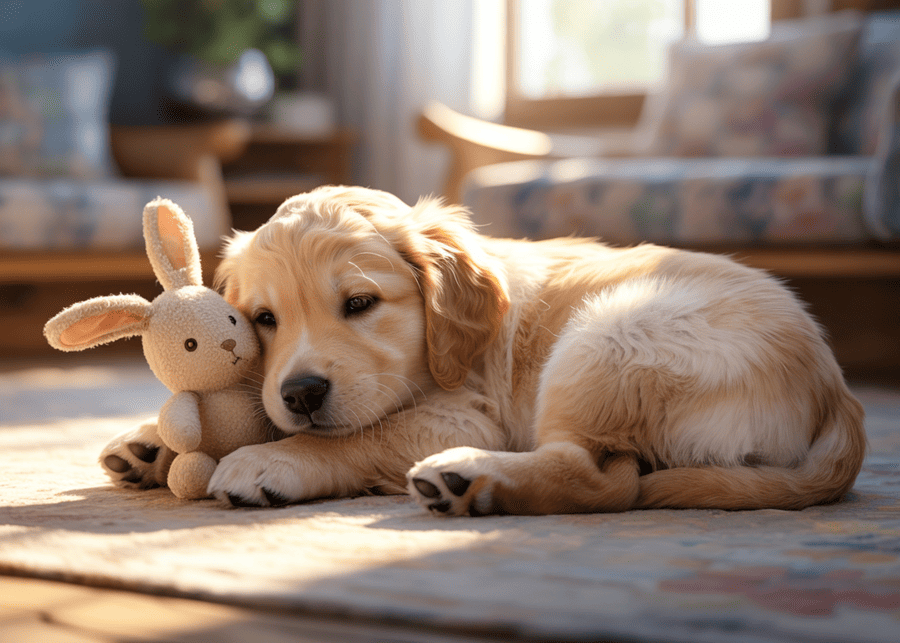Bringing a new puppy home is exciting, but the toy aisle can be overwhelming. You want to give them the best, but what does that even mean? It’s a real puzzle.
The best toys for puppies are a mix of soft plush toys for comfort, durable chew toys for teething, and interactive toys for mental stimulation. This variety supports their physical and emotional development while keeping them safely engaged.
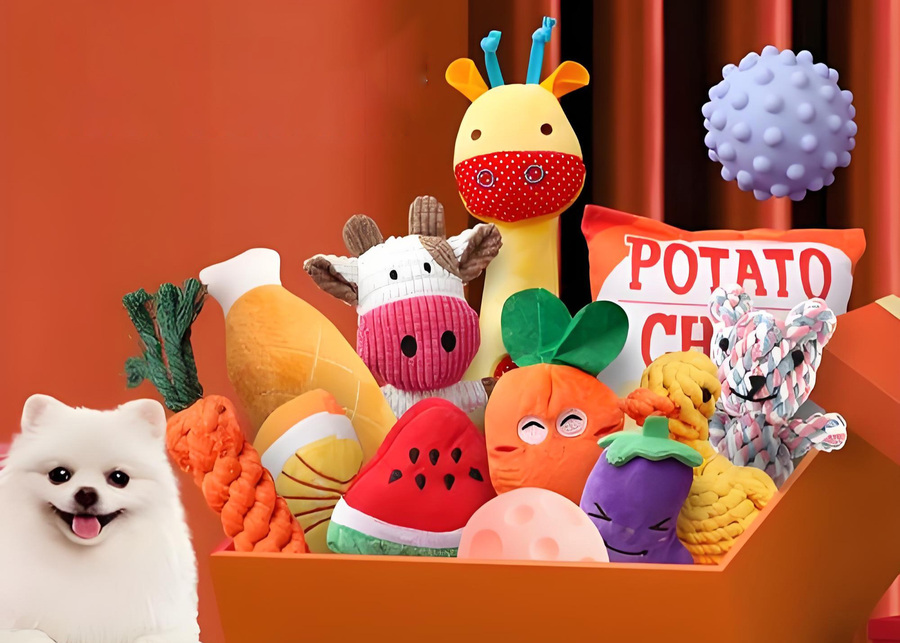
Choosing the right toys isn’t just about fun; it’s about nurturing your puppy’s growth. A well-chosen toy can soothe them when they’re anxious, relieve pain during teething, and teach them important skills. It’s a fundamental part of raising a happy, healthy dog. As a manufacturer with over a decade of experience, I’ve seen firsthand how the right toy can make all the difference. Let’s dive deeper into what makes a toy truly beneficial for a young pup.
What kinds of toys are best for puppies?
You know your puppy needs toys, but the huge variety is confusing. Are you supposed to buy one of everything? You want to buy toys that actually help them grow.
The best toys for puppies fall into three main categories: comfort toys, chew toys, and interactive toys. Providing a mix of these types ensures you are meeting all your puppy’s developmental needs, from emotional security to physical health.

A puppy’s needs change from day to day, and even hour to hour. Having a well-rounded toy box means you’re always prepared. In our work creating custom pet products for brands worldwide, we always advise clients to consider a collection that addresses these core needs.
Key Toy Categories for Puppies
A balanced approach is always best. Here’s a breakdown of the essential toy types:
| Toy Category | Primary Purpose | Examples |
|---|---|---|
| Comfort Toys | Emotional Support, Security | Soft plush toys, toys with heartbeats |
| Chew Toys | Teething Relief, Dental Health | Rubber toys, TPR toys, nylon chews |
| Interactive Toys | Mental Stimulation, Problem-Solving | Puzzle toys, treat-dispensing balls |
Each category plays a vital role. Comfort toys, like soft plushies, act as a surrogate for their mother and littermates, which is crucial for easing separation anxiety. Chew toys are non-negotiable for teething puppies; they soothe sore gums and teach appropriate chewing habits. Finally, interactive toys challenge their minds, prevent boredom, and can help build your bond through shared playtime.
What do puppies like to play with the most?
It’s frustrating when you buy a brand-new toy, and your puppy ignores it for an old slipper. You start to wonder if you’re just wasting your money.
Puppies most enjoy toys that tap into their natural instincts. They love soft toys they can carry like prey, chew toys that soothe their gums, and things that squeak or move in surprising ways.
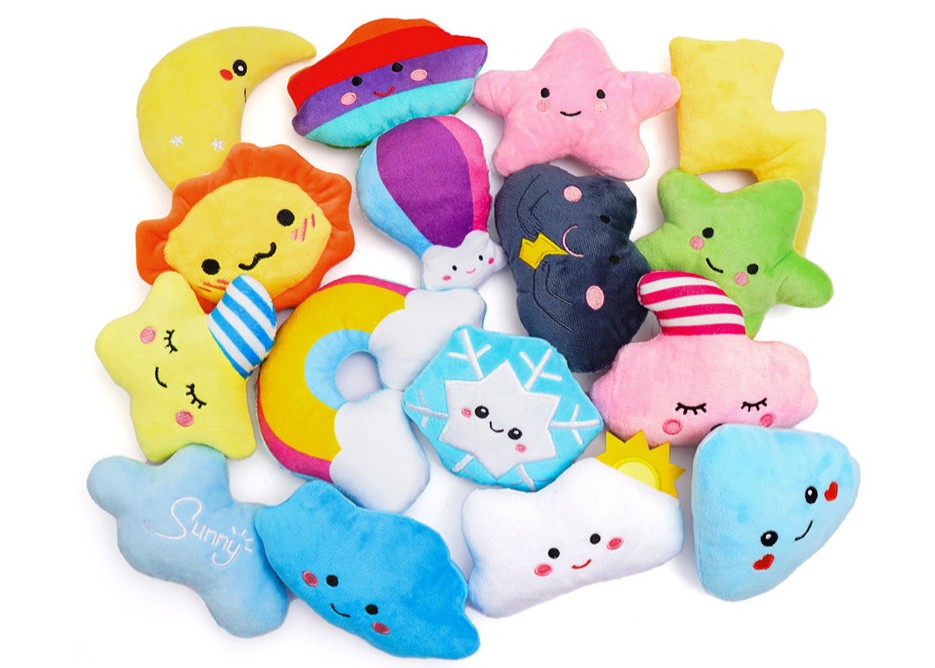
Understanding why puppies like certain toys is the secret to picking a winner. Their play isn’t random; it’s driven by deep-seated instincts. When we design toys, like the custom plush pickleball paddle for our client Garrett, we think about these instincts. He knew the dogs at events were bored, and a toy designed for them to "catch" and carry would be a huge hit.
Tapping into Puppy Instincts
A puppy’s favorite toy will often satisfy one of these three core drives:
- The Instinct to Chew: Puppies explore the world with their mouths. Chewing is a natural behavior that intensifies during teething because the pressure on their gums provides relief. A good chew toy made of firm rubber gives them a safe and satisfying outlet for this urge.
- The Need for Comfort: Puppies are pack animals who are used to snuggling with their mom and siblings. A soft, plush toy can become a comforting companion they carry to bed, providing a sense of security when they are alone.
- The Thrill of the "Hunt": Toys that squeak, crinkle, or bounce erratically trigger a puppy’s prey drive. This "hunting" play is fantastic for burning off energy and providing mental stimulation.
Should puppies have hard or soft toys?
You worry about your puppy’s delicate teeth. Are hard toys too tough? But then again, are soft toys too easy to shred and swallow? It’s a common concern for new owners.
Puppies need a combination of both. Soft toys are essential for comfort and gentle play, while firmer (not rock-hard) chew toys are necessary for safe teething and satisfying their need to gnaw.
The key isn’t choosing one over the other; it’s about providing the right toy for the right purpose. Think of it as building a toolkit for your puppy. A soft toy is for cuddling and security, while a durable chew toy is for the serious business of teething. We pay close attention to this balance when sourcing products for our clients, like Judy in Germany, who needs a variety of safe, proven sellers for her retail chain.
Comparing Soft and Firm Toys
Here’s how to think about the role of each type of toy:
| Toy Type | Primary Benefit | Best For… | Caution |
|---|---|---|---|
| Soft / Plush | Comfort, Gentle Play | Cuddling, carrying, light mouthing. | Always supervise to prevent shredding and ingestion of stuffing. |
| Firm (Rubber/TPR) | Teething Relief, Durability | Soothing sore gums, satisfying a strong urge to chew. | Ensure it has some give. Check regularly for damage and replace if pieces break off. |
| Hard (Nylon) | Extreme Durability | Aggressive chewers, usually older puppies or adult dogs. | Can be too hard for a young puppy’s teeth. Consult your vet if you’re unsure. |
A good rule of thumb for a chew toy’s hardness is the "thumbnail test." If you can’t press your thumbnail into the surface and make a slight indent, it’s likely too hard for a young puppy.
What is the best material for puppy toys?
The toy aisle is a sea of plastic, rubber, and fabric. How do you know which materials are actually safe for your puppy to put in their mouth every single day?
The best materials are non-toxic, durable, and suited to the toy’s function. Natural rubber and TPR are top choices for chew toys, while high-quality, securely stitched plush fabrics are ideal for soft toys.
Material safety is our top priority as a manufacturer. It’s the foundation of a good pet product. We have a strict raw material control process because we know that brand owners and their customers trust us to provide safe items. According to a 2022 report by the Center for Pet Safety, unsafe materials and poor construction are leading causes of toy-related injuries. This is why choosing toys made from proven, safe materials is so critical.
A Guide to Safe Toy Materials
Here’s a look at the best materials for different types of puppy play:
- For Chewing: Natural Rubber & TPR: Natural rubber is durable, bouncy, and satisfying for a puppy to chew on. It’s tough but has enough give to protect young teeth. TPR (Thermoplastic Rubber) is another excellent choice; it’s a non-toxic material that is both durable and flexible, making it perfect for teething toys.
- For Cuddling: Quality Plush: For comfort toys, the fabric should be soft yet strong. We look for materials with secure stitching and reinforced seams to withstand gentle chewing and carrying. Most importantly, we ensure any dyes used are pet-safe and non-toxic.
- Materials to Avoid: Steer clear of hard, brittle plastics that can shatter into sharp pieces. Also be wary of toys with heavy chemical smells, which could indicate the presence of harmful phthalates or BPA.
What is a comforting toy for a puppy?
Your new puppy seems anxious, especially when left alone or at night. Their whining is heartbreaking, and you just want them to feel safe and secure in their new home.
A soft plush toy is the ultimate comforting toy for a puppy. Its warmth and softness can simulate the feel of a littermate, which helps to significantly reduce separation anxiety and promote restful sleep.
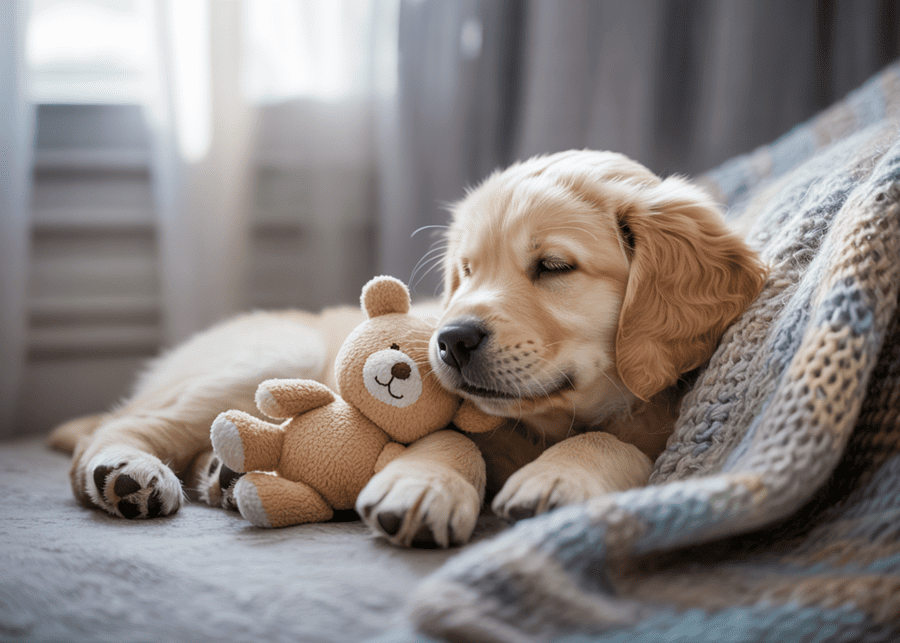
The transition to a new home is a huge change for a puppy. They’ve just left the constant companionship of their mother and siblings. A comfort toy acts as a stand-in, giving them something to snuggle with. In our design process for plush toys, we focus on soft textures and embroidered features instead of hard plastic eyes or noses, eliminating any potential choking hazards. This makes the toy a perfectly safe and cuddly companion.
How to Maximize the Comfort Factor
A simple plush toy is great, but you can make it even more effective.
- Scent is Key: When you first bring the toy home, keep it with you for a day. Sleep with it or just have it on the couch next to you. Your scent will transfer to the toy, making it even more reassuring for your puppy when they’re alone.
- Proper Introduction: Introduce the toy during a calm, happy moment. Let the puppy sniff and explore it on their own terms. Don’t force it on them.
- Advanced Comfort Toys: For puppies with severe anxiety, you can find toys with special features. Some have a pouch for a small, pet-safe heat pack to mimic body warmth, while others contain a device that simulates a rhythmic heartbeat, providing an extra layer of calm.
What toys can puppies not have?
You see your puppy trying to chew on everything from sticks to your shoes. It’s natural to wonder which of these common items are actually dangerous for them.
Knowing what toys to avoid is just as crucial as knowing which ones to provide. Many common items, and even some products sold as dog toys, can pose serious health risks.
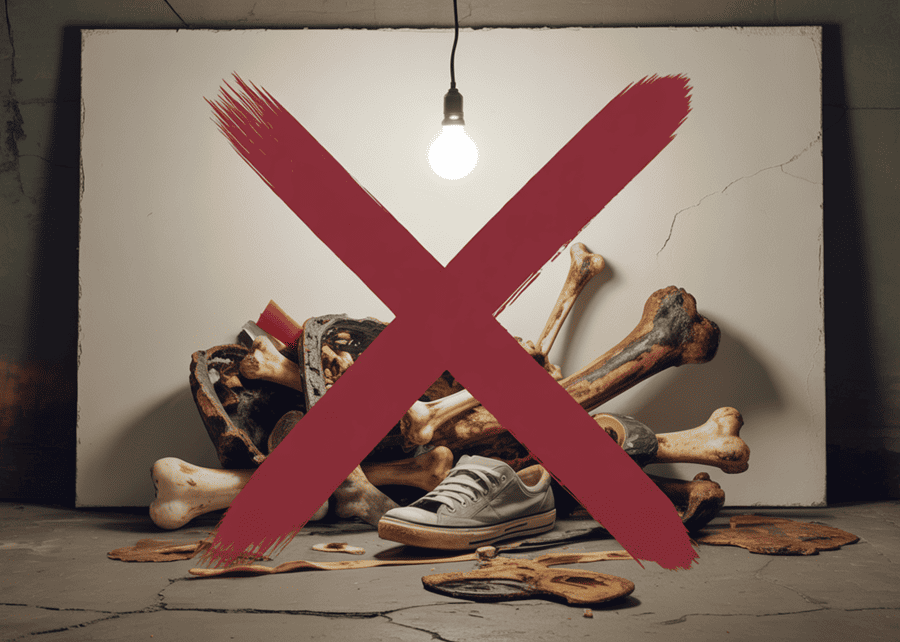
Safety is non-negotiable. An unsafe toy can lead to choking, internal blockages, or broken teeth, resulting in a traumatic and expensive trip to the emergency vet. As a manufacturer responsible for the safety of products sold globally, our quality inspection process is designed to prevent these exact dangers. We ensure every product we make or source is free from common hazards.
A Checklist of Unsafe "Toys"
Keep your puppy away from these items. This is not a complete list, but it covers the most common dangers.
| Unsafe Item | Why It’s Dangerous |
|---|---|
| Cooked Bones | They become brittle and can easily splinter, causing choking or severe internal injuries. |
| Rawhide Chews | Can pose a choking risk and may cause digestive blockages if large pieces are swallowed. |
| Sticks & Wood | Can splinter in the puppy’s mouth or throat and cause punctures or infections. |
| Human Items | Shoes, socks, and children’s toys are not designed to withstand a dog’s jaws and can be easily ingested. |
Always supervise your puppy with any new toy and inspect their toys regularly. Throw away any toy that is starting to break apart or has pieces falling off.
Conclusion
The right toys are vital for a puppy’s growth. For brands wanting to provide the best, Preeminent is your partner in creating safe, custom, and high-quality pet supplies.

